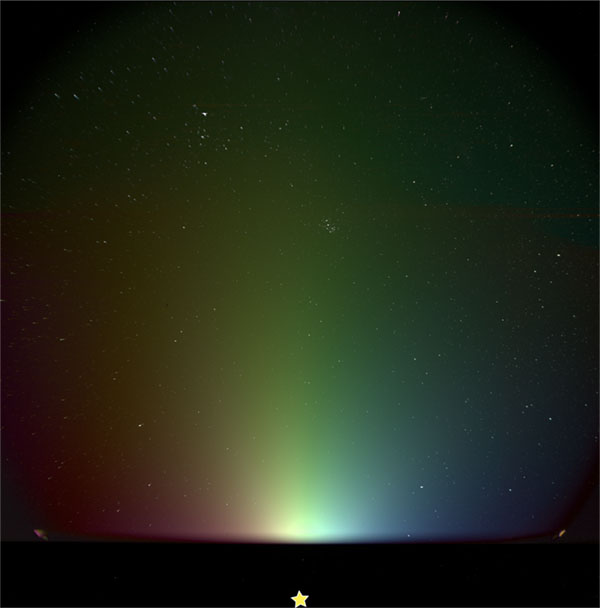A Polarimetric Rainbow
This is a PUNCH Science Nugget

WFI-2 reveals a polarimetric rainbow in the beautiful, ghostly zodiacal light surrounding the Sun, against a backdrop of familiar constellations. This preliminary data product demonstrates polarimetry using the raw images collected by the spacecraft.
This beautiful, ghostly polarimetric rainbow reveals the direction and degree of polarization of the ghostly zodiacal light, in a preliminary data product from the WFI-2 spacecraft. On 18-April, WFI-2 executed its first polarimetric triplet imaging, collecting images through all three of its polarizers in succession. The polarimetric triplet image, expressed as RGB color channels, reveals the direction (via hue) and degree (via saturation) of polarization everywhere in the field of view all at once. WFI looks to one side of the Sun (marked with a star glyph). This image, made with Level 0 (uncalibrated) data direct from the WFI-2 camera, is consistent with existing results (Leinert et al. 1998) on the direction and degree of polarization of the zodiacal light. Stars appear white because they are mostly unpolarized compared to the 7% polarization of the zodiacal light. PUNCH uses a novel mathematical formalism (“MZP”, DeForest et al. 2022) to manipulate and background-subtract the polarimetric values from each of its four cameras. Chromatic treatment of coronal polarization was demonstrated at the 2023 total solar eclipse (Patel et al. 2023), highlighting the long-term synergy between ground- and space-based observations of the corona.
References
PUNCH science nuggets are archived on our News Page.



